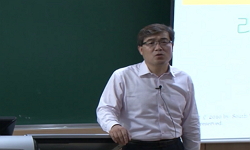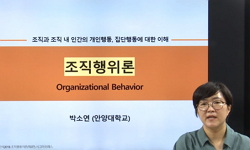- CONTENTS
- 1 Recognising and Resolving Conflicts = 1
- 1.1 Rift Between Company Founders = 1
- 1.2 What Is a Conflict? = 2
- 1.3 Conflicts Often Approach Quietly = 2
다국어 입력
あ
ぁ
か
が
さ
ざ
た
だ
な
は
ば
ぱ
ま
や
ゃ
ら
わ
ゎ
ん
い
ぃ
き
ぎ
し
じ
ち
ぢ
に
ひ
び
ぴ
み
り
う
ぅ
く
ぐ
す
ず
つ
づ
っ
ぬ
ふ
ぶ
ぷ
む
ゆ
ゅ
る
え
ぇ
け
げ
せ
ぜ
て
で
ね
へ
べ
ぺ
め
れ
お
ぉ
こ
ご
そ
ぞ
と
ど
の
ほ
ぼ
ぽ
も
よ
ょ
ろ
を
ア
ァ
カ
サ
ザ
タ
ダ
ナ
ハ
バ
パ
マ
ヤ
ャ
ラ
ワ
ヮ
ン
イ
ィ
キ
ギ
シ
ジ
チ
ヂ
ニ
ヒ
ビ
ピ
ミ
リ
ウ
ゥ
ク
グ
ス
ズ
ツ
ヅ
ッ
ヌ
フ
ブ
プ
ム
ユ
ュ
ル
エ
ェ
ケ
ゲ
セ
ゼ
テ
デ
ヘ
ベ
ペ
メ
レ
オ
ォ
コ
ゴ
ソ
ゾ
ト
ド
ノ
ホ
ボ
ポ
モ
ヨ
ョ
ロ
ヲ
―
http://chineseinput.net/에서 pinyin(병음)방식으로 중국어를 변환할 수 있습니다.
변환된 중국어를 복사하여 사용하시면 됩니다.
예시)
- 中文 을 입력하시려면 zhongwen을 입력하시고 space를누르시면됩니다.
- 北京 을 입력하시려면 beijing을 입력하시고 space를 누르시면 됩니다.
А
Б
В
Г
Д
Е
Ё
Ж
З
И
Й
К
Л
М
Н
О
П
Р
С
Т
У
Ф
Х
Ц
Ч
Ш
Щ
Ъ
Ы
Ь
Э
Ю
Я
а
б
в
г
д
е
ё
ж
з
и
й
к
л
м
н
о
п
р
с
т
у
ф
х
ц
ч
ш
щ
ъ
ы
ь
э
ю
я
′
″
℃
Å
¢
£
¥
¤
℉
‰
$
%
F
₩
㎕
㎖
㎗
ℓ
㎘
㏄
㎣
㎤
㎥
㎦
㎙
㎚
㎛
㎜
㎝
㎞
㎟
㎠
㎡
㎢
㏊
㎍
㎎
㎏
㏏
㎈
㎉
㏈
㎧
㎨
㎰
㎱
㎲
㎳
㎴
㎵
㎶
㎷
㎸
㎹
㎀
㎁
㎂
㎃
㎄
㎺
㎻
㎽
㎾
㎿
㎐
㎑
㎒
㎓
㎔
Ω
㏀
㏁
㎊
㎋
㎌
㏖
㏅
㎭
㎮
㎯
㏛
㎩
㎪
㎫
㎬
㏝
㏐
㏓
㏃
㏉
㏜
㏆
https://www.riss.kr/link?id=M14720406
- 저자
-
발행사항
[Cham], Switzerland : Springer, [2016] ⓒ2016
-
발행연도
2016
-
작성언어
영어
- 주제어
-
DDC
658.4053 판사항(23)
-
ISSN
2192-810X (electronic)
-
ISBN
9783319318837
3319318837
9783319318851 (eBook)
3319318853 (eBook) -
자료형태
단행본(다권본)
-
발행국(도시)
스위스
-
서명/저자사항
Conflict management / Stephan Proksch
-
원서명
Konfliktmanagement im Unternehmen
-
형태사항
xi, 134pages : illustrations ; 25 cm
-
총서사항
Management for professionals, 2192-8096 Management for professionals, 2192-8096
-
일반주기명
Originally published: [Berlin] : SpringerGabler, 2014
Includes bibliographical references (pages 133-134) - 소장기관
-
0
상세조회 -
0
다운로드
부가정보
목차 (Table of Contents)
- CONTENTS
- 1 Recognising and Resolving Conflicts = 1
- 1.1 Rift Between Company Founders = 1
- 1.2 What Is a Conflict? = 2
- 1.3 Conflicts Often Approach Quietly = 2
- 1.4 Conflict Analysis = 3
- 1.4.1 Setting Objectives in a Conflict Situation = 4
- 1.4.2 Types of Conflict = 4
- 1.4.3 Parties to the Conflict = 6
- 1.4.4 Conflict Progression and Escalation = 7
- 1.5 How to Conduct a Clarifying Conversation = 8
- 1.6 Conflicts in the Workplace : Curse or Blessing? = 9
- 1.6.1 Risks Arising from Conflicts = 9
- 1.6.2 Uses of Conflicts = 10
- 1.7 Excursus : Mobbing = 11
- 1.8 Rift Between Company Founders : What Happened Next = 11
- 2 Traditional Methods of Conflict Management = 13
- 2.1 Differing Leadership Styles in the Management Team = 13
- 2.2 The Traditional Approach to Conflicts in Organisations = 14
- 2.2.1 Conflicts as Opposition Between Employer and Employee = 14
- 2.2.2 Traditional Methods of Conflict Management = 18
- 2.2.3 Conflicts as Manifestation of Power Struggles and Micro Politics = 20
- 2.2.4 Excursus : Forms of Power Usage = 21
- 2.3 The Four Basic Forms of Conflict Management in Organisations = 23
- 2.3.1 Separative Measures = 24
- 2.3.2 Issue-Related Measures = 25
- 2.3.3 Individual-Related Measures = 26
- 2.3.4 Integrative Measures = 26
- 2.4 How Do Corporations Deal with Conflicts Today? = 27
- 2.4.1 Uses and Limitations of the Traditional Methods = 28
- 2.5 Conflict Management : The Holistic View = 28
- 2.6 Differing Leadership Styles in the Management Team : What Happened Next = 29
- 3 Complementary Forms of Conflict Management = 31
- 3.1 The Difficult Boss = 31
- 3.2 Basic Complementary Forms of Conflict Management = 32
- 3.2.1 Mediation = 32
- 3.2.2 Moderation = 33
- 3.2.3 Supervision = 33
- 3.2.4 Coaching = 34
- 3.2.5 Team Development = 35
- 3.3 Organisational Development Versus Mediation? = 35
- 3.3.1 Organisational Development and Conflict Management = 36
- 3.3.2 Mediation Is Complementary to Organisational Development = 37
- 3.4 Integrative Forms of Conflict Management : Used too Rarely? = 40
- 3.4.1 Mediation Costs Time and Money = 40
- 3.4.2 Conflict Aversion = 41
- 3.4.3 Loss of Power and Control = 41
- 3.4.4 Fear of Discovery and Exposure = 42
- 3.4.5 Loss of Image Among Colleagues = 42
- 3.4.6 Lack of Know-how in Dealing with Conflicts = 42
- 3.5 Consequences of the Rare Usage of Integrative Forms of Conflict Management = 43
- 3.6 The Difficult Boss : What Happened Next = 44
- 4 Mediation = 45
- 4.1 The Performance Appraisal = 45
- 4.2 Mediation : The Origins = 46
- 4.3 The Mediation Phase Model = 48
- 4.3.1 Pre-mediation Phase = 49
- 4.3.2 Parameter Definition Phase = 51
- 4.3.3 Issue Compilation = 52
- 4.3.4 Conflict Discussion = 53
- 4.3.5 Search for a Solution = 54
- 4.3.6 Agreement = 54
- 4.3.7 Post-mediation Phase = 55
- 4.4 The Performance Appraisal : What Happened Next = 55
- 5 Mediation Techniques = 57
- 5.1 Conflict in the Sales Team = 57
- 5.2 Tensions Often Turn into Real Conflicts = 58
- 5.3 Which Forms of Communication Cause Conflicts to Escalate? = 59
- 5.4 Which Discussion Techniques Defuse Conflicts? = 61
- 5.4.1 Active Listening = 61
- 5.4.2 Paraphrasing = 62
- 5.4.3 I-Messages = 62
- 5.4.4 Meta-dialogue = 63
- 5.4.5 Goal Orientation = 63
- 5.4.6 Change of Perspective = 64
- 5.4.7 Feedback = 64
- 5.4.8 (Constructive) Reformulation = 65
- 5.5 Emotional Intelligence = 65
- 5.6 Conflict in the Sales Team : What Happened Next = 66
- 6 Questioning Techniques = 69
- 6.1 When Is One Allowed to Smoke? = 69
- 6.2 The Answer Depends on the Question Formulation = 70
- 6.3 The Three Levels of Mediation Questioning Techniques = 71
- 6.3.1 Mediation Approach = 71
- 6.3.2 Question Forms = 73
- 6.3.3 Questioning Methodology = 76
- 6.4 When Is One Allowed to Smoke? What Happened Next = 77
- 7 Conflict Prevention = 79
- 7.1 Everyday Disputes in the Office = 79
- 7.2 Productive and Unproductive Conflicts = 80
- 7.3 Conflict Prevention Through Communication Structure Configuration = 81
- 7.3.1 Formal Communication Structures = 81
- 7.3.2 Other Structural Forms of Communication = 83
- 7.4 Conflict Prevention Through Discussion and Expectation Management = 83
- 7.5 Conflict Prevention Through Self-Reflection and Personal Development = 85
- 8 Setting Up an Inhouse Conflict Management System = 89
- 8.1 A Pharmaceutical Company Improves Internal Cooperation = 89
- 8.2 What Is the Purpose of an Inhouse Conflict Management System? = 89
- 8.3 The Core Elements of an Internal Conflict Management System = 90
- 8.3.1 Internal Conflict Managers = 91
- 8.3.2 The Role of Management = 91
- 8.3.3 Information and Internal Marketing = 92
- 8.4 Guidelines for the Implementation of Cooperative Conflict Management = 93
- 8.4.1 Concept Phase = 94
- 8.4.2 Steering Committee = 95
- 8.4.3 Analysis = 95
- 8.4.4 Training of Internal Mediators and Executives = 97
- 8.4.5 Information and Internal Marketing = 98
- 8.4.6 Putting Mediation and Peer Group Supervision into Effect = 98
- 8.4.7 Establishment in the Organisation = 99
- 8.4.8 Ongoing Monitoring = 99
- 8.5 A Pharmaceutical Company Improves Internal Cooperation : What Happened Next = 100
- 9 Establishment of Mediation Facilities Within an Enterprise : Two Case Studies = 101
- 9.1 Establishment of Mediation Facilities in a Bank = 101
- 9.1.1 Project Background = 101
- 9.1.2 Concept Phase = 102
- 9.1.3 Steering Committee = 103
- 9.1.4 Analysis = 104
- 9.1.5 Training of Internal Mediators and Executives = 104
- 9.1.6 Information and Internal Marketing = 105
- 9.1.7 Putting Mediation and Peer Group Supervision into Effect = 107
- 9.1.8 Establishment in the Organisation = 107
- 9.1.9 Ongoing Monitoring = 108
- 9.2 Establishment of Mediation Facilities in a Hospital = 108
- 9.2.1 Project Background = 108
- 9.2.2 Concept Phase : Steering Committee : Training of Internal Mediators = 110
- 9.2.3 Analysis = 110
- 9.2.4 Information and Internal Marketing = 111
- 9.2.5 Putting Mediation and Peer Group Supervision into Effect = 111
- 9.2.6 Establishment in the Organisation = 113
- 9.2.7 Ongoing Monitoring = 113
- 10 Check Lists, Mediation Agreement, Codes of Conduct = 117
- 10.1 Key One-on-One Interview Questions for Assignment Clarification = 117
- 10.1.1 Questions About the Problem = 117
- 10.1.2 Organisational Questions/Framework Conditions = 117
- 10.2 The Mediation Process = 118
- 10.3 Debriefing and Quality Control = 118
- 10.4 Mediation Agreement(Sample) = 119
- 10.5 Ethical Guidelines of the Austrian Mediation Network = 120
- 10.6 European Code of Conduct for Mediators = 124
- 10.6.1 Competence, Appointment and Fees of Mediators and Promotion of Their Services = 124
- 10.6.2 Independence and Impartiality = 124
- 10.6.3 The Mediation Agreement, Process, Settlement and Fees = 125
- 10.6.4 Confidentiality = 126
- Summary = 127
- Glossary = 129
- References = 133













